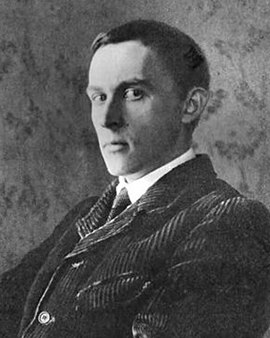In the captivating depths of Polish modernism, the name Stanisław Ignacy Witkiewicz, better known as Witkacy, asserts itself as a striking exclamation point for captivating creativity and versatile genius. Born on February 24, 1885, in Warsaw, a hub of artistic creativity in the Russian Empire, Witkacy's destiny was marked early on by art and culture. Influenced by his parents, an artist and a musician, and the surrounding artistic heritage of the so-called Young Poland (Młoda Polska), Witkacy spent his youthful years in the Austrian partition of Zakopane. Encouraged by the free spirit of his father, who taught him on his own instead of sending him to school, Witkacy received a comprehensive education. He graduated from high school and took up studies at the Academy of Fine Arts in Cracow, which he pursued only briefly, however. The tragic end of his engagement in 1914 drove him far away, and together with his friend Bronisław Malinowski he traveled to Australia. With the onset of World War I, he returned to Europe and served in the Pavlovsky Regiment in Petersburg, where he lived through the Russian Revolution. From 1915 Witkacy devoted himself to art, a commitment reflected in our wide range of high quality art prints of his work.
When Witkacy returned to Poland, he focused entirely on art and adopted his pen name. In 1920 alone he wrote ten plays and in 1922 married Jadwiga von Unrug, the granddaughter of the Polish painter Juliusz Fortunat Kossak. To escape his financial hardships, he founded in Zakopane the company "S. I. Witkiewicz" and painted portraits, often under the influence of drugs. These artistic experiments led to a variety of expressions and interpretations that remain alive in our art prints. His drug experiments and portraits attracted attention and secured his popularity. After the 1939 invasion of Poland by the Germans, Witkacy's age and health led him to be rejected by the army. Discouraged, he fled east with his mistress, Czesława Oknińska. When the territories were handed over to the Soviet Union, he took his own life.
During his lifetime Witkacy was often misunderstood and rejected, but today he is considered one of the most important writers of Polish modernism, along with Witold Gombrowicz and Bruno Schulz. The power of his vision and uncompromising creativity are reflected in our art prints, which help preserve and spread the legacy of this remarkable artist. With the precision and quality of our art prints, we strive to represent Witkacy's art in a way that does justice to the original painting and invites viewers to immerse themselves in the complex and fascinating world of this incomparable artist.
×





_-_(MeisterDrucke-1464406).jpg)
_-_(MeisterDrucke-1464406).jpg)
.jpg)
.jpg)
.jpg)
.jpg)
.jpg)
.jpg)
.jpg)
.jpg)
.jpg)
.jpg)
.jpg)
.jpg)
.jpg)
.jpg)
.jpg)
.jpg)
.jpg)
.jpg)
.jpg)
.jpg)
.jpg)
.jpg)
.jpg)
.jpg)
.jpg)
.jpg)
 - (MeisterDrucke-210493).jpg)
 - (MeisterDrucke-210493).jpg)
.jpg)
.jpg)
.jpg)
.jpg)
.jpg)
.jpg)
.jpg)
.jpg)
.jpg)
.jpg)
.jpg)
.jpg)






